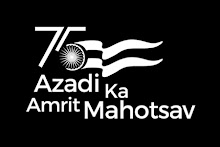For the first time in a decade, the railways increased passenger fares across all classes to improve its dwindling finances and shore up services on trains and at stations. The raise, ranging between 2 paise and 10 paise per km, depending on the class you travel, will translate into a higher burden for those travelling longer distances and in cheaper classes.
In fact, the percentage hikes in upper class fares will be even lower since the proposed hikes pertain only to the base fare. Other elements of the fare like reservation charges, catering, superfast charges and so on remain unchanged. These account for a larger share of upper class ticket fares than in cheaper classes. Also, the revision in AC 1st and 2nd class fares is lower given that they were hiked in the last budget, when pressure from allies forced the UPA to withdraw plans for an across-the-board hike.
The Congress defended the rail fare hike even as the BJP, Left parties and Trinamool protested against the hike in rail fares in one voice and demanded an immediate rollback in all categories except AC-I and AC-II. The BJP said the decision clearly exposed the “anti- democratic” face of the government.
Railway minister Pawan Kumar Bansal said the increase in passenger fares would help the state-run transporter generate Rs 6,600 crore a year and only partially bridge the gap between income and revenue, which is projected to touch Rs 25,000 crore by the year-end. During the remaining part of the current financial year, railways will be able to earn Rs 1,200 crore.
The move comes just a day after ratings agency Fitch once again talked of a possible downgrade in India’s sovereign rating to junk grade, citing poor finances and slow growth. While the decision may have been on expected lines, the timing, which is just eight weeks before the rail budget, came as a surprise to many.
The protest from political parties, however, is something that would not have come as a surprise. In the last railway budget, the then minister Dinesh Trivedi proposed a fare increase that would have raised an additional Rs.4,000 crore. But he was forced to resign and most of the increase was rolled back after his party, the Trinamool Congress, opposed the decision.
Rampant populism that prevailed from the time of Lalu Prasad Yadav, which was taken to even higher levels when Mamata Banerjee was the railway minister, has seriously impaired the Railways’ ability to generate surplus to invest in capacity and safety, leaving it even more dependent on government support and higher borrowings.
In 2011-12, the Railways had an operation ratio of 95% — implying that for every Rs.100 earned from passenger and freight operations, it spent Rs.95. The Railways subsidises its losses in the passenger business from higher levy on freight. As a consequence, it has been steadily losing market share to road transport. Even the current hike will cover only a part of the losses on passenger services, expected to rise to over Rs. 25,000 crore in the current year.







1 comment:
There is definitely a need to improve safety, timeliness and efficiency of railways and for this the committment of the people using the people and the employees is paramount. Unless and until people do not cooperate and the employess are not serious about their duty no authority can bring in the desired changes in railways or for that matter any public service.
Post a Comment